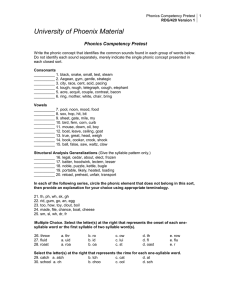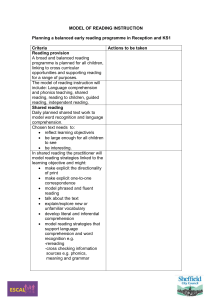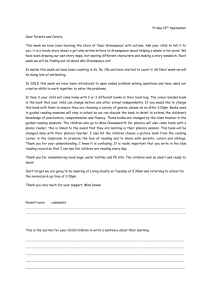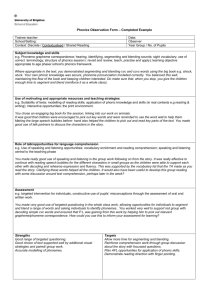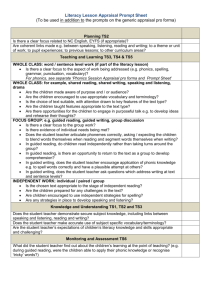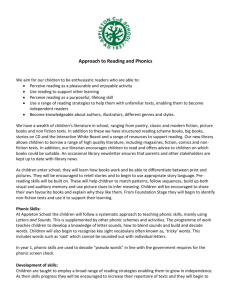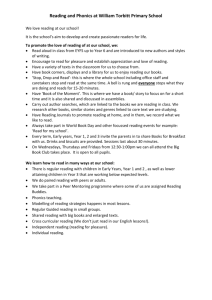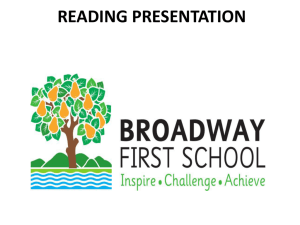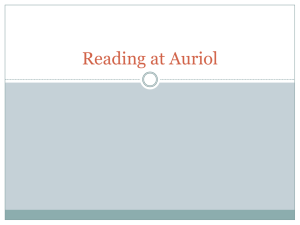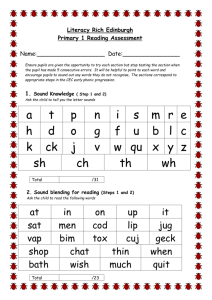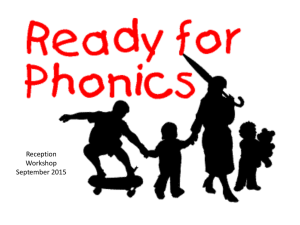3 Sources of information
advertisement
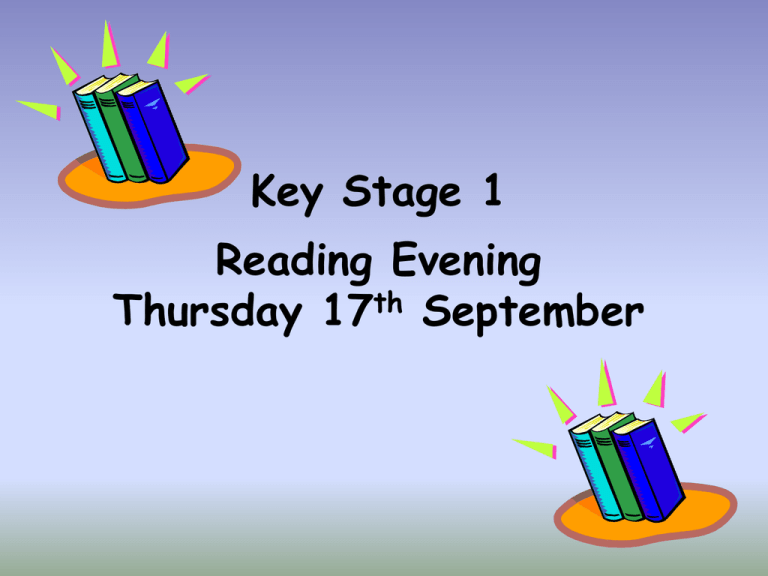
Key Stage 1 Reading Evening Thursday 17th September Welcome! Who we are What we do in school What you can do at home Reading in School There are different styles and aspects of reading being taught in school every day. Children receive a daily phonics lesson which teaches children to read words by breaking them down in to letter sounds. Children are also taught to read and spell common tricky words that cannot be sounded out – e.g. said Children are listened to and read to on a regular basis. Individual Reading There are reading books in every class. These are graded by colour and number. Children are given the opportunity to choose and read a reading book regularly. 3 Sources of information for reading Visual Meaning Does it look right? Does it make sense? Structure Does it sound right? 3 Helping your child at home • How to de-bug a book 1,2 3,4,5 6,7,8 Pink Red Yellow (by end R) 9,10,11 12,13,14 15,16 Blue Green Orange (by end Y1) 17,18 19 20 21 22 23,24 25,26 Turquoise Purple Gold – ( by end of Y2 White Lime Guided reading Children read in a small group Children read the same book selected by the teacher. The purpose is to teach children the strategies of independent reading Guided Reading The teacher chooses the book carefully to teacher specific reading skills. Children are encouraged to read the blurb, and make predictions about the book. Children are encouraged to read at their own pace and use reading strategies to tackle unknown words. Children are also asked questions about what they have read. Testing • At the end of Year 1 children will be tested on their ability to decode words - with a “phonic screening check” The check comprises of 40 words. The words are a mixture of real and pseudo. Look out for Phonic reading check meeting later in the year! Real and not real words box flag round pipe Sound Buttons We teach children to decode words through a system of synthetic phonics. (This means breaking words down into the smallest unit of sound). e.g Moon – (m-oo-n) Night – (n-igh-t) Corner (c-or-n-er) Looking (l-oo-k-i-ng) Reading tests • At the end of Year 2 children are tested on their reading fluency and comprehension Testing will take the form of comprehension tests similar in format to the SAT tests that the children took previously but at this stage we only have sample papers. Please look out for SAT meeting later on in the year. Question types There will be a variety of question types. Multiple choice Ranking/ordering – eg sequencing events Matching – eg character to their job in the story Labelling – eg identifying labels and titles Text retrieval - short answer Vocabulary – give me another words that means the same Open ended – eg Why did Lucy write a letter to her Grandmother? 2016 test Sample papers 2 Papers Children sit both papers Levels have been taken away Further information to follow on marking procedures How can I help my child at home? • • • • • • Listen to them read De – bug the book Support them decoding unfamiliar words Phonic games Key words Wick road library What if it’s not all coming together…? • Extra opportunities for pupils. These may include:Reading Recovery Better Reading Partners
